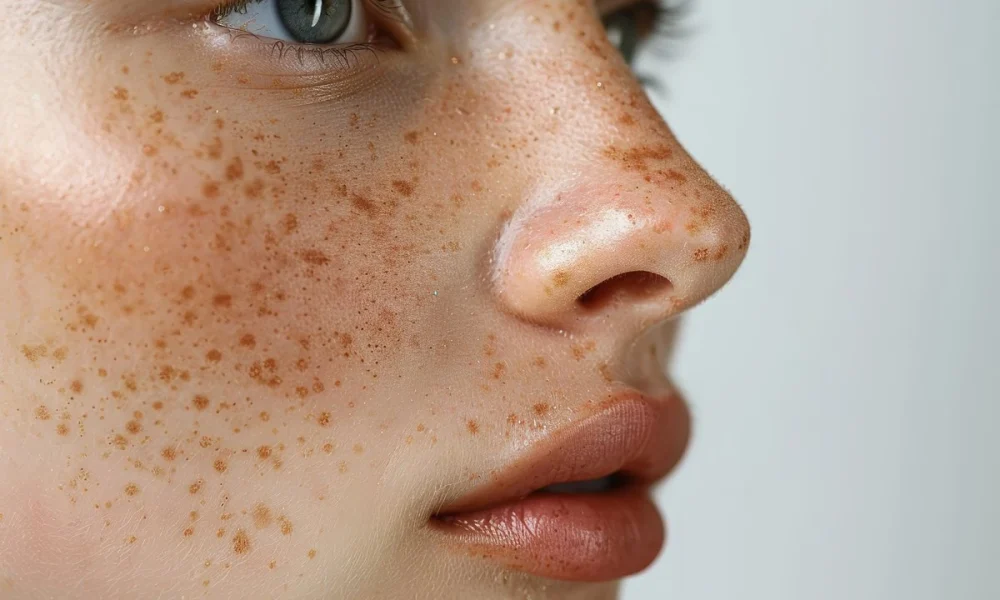Introduction: Understanding Hyperpigmentation
Have you ever wondered why some areas of your skin appear darker than others? Hyperpigmentation, often a source of frustration for many individuals seeking flawless skin, is a common condition characterized by skin patches darker than the surrounding areas. From stubborn sunspots to melasma, understanding the root causes of hyperpigmentation is crucial for effective treatment and prevention.
In this comprehensive guide, we delve into the main cause of hyperpigmentation, unraveling the intricacies of this skin condition and shedding light on hyperpigmentation treatment options. Join us as we explore the factors behind hyperpigmentation and empower you with the knowledge to achieve a radiant, even complexion.
Understanding Different Forms of Hyperpigmentation
Hyperpigmentation encompasses a wide range of skin discoloration issues, each with its own unique causes and characteristics. From post-blemish scarring to sun damage and age spots, understanding the diverse manifestations of hyperpigmentation is essential for effective treatment.
Post-Blemish Scarring: After a blemish heals, it can leave behind dark marks or spots on the skin, known as post-inflammatory hyperpigmentation. These discolorations result from the skin’s natural healing process, which involves the overproduction of melanin in response to inflammation or trauma.
Sun Damage: Prolonged exposure to ultraviolet (UV) radiation from the sun can trigger the development of sunspots or solar lentigines, commonly called age spots. Melanocytes are stimulated to produce excess melanin by UV rays, forming dark patches on sun-exposed areas of the skin.
Eczema and Freckles: Inflammatory skin conditions like eczema can contribute to hyperpigmentation, particularly in areas of persistent irritation or scratching. Freckles, small brown spots on sun-exposed skin areas, are also a form of hyperpigmentation. caused by genetic factors and sun exposure.
Melasma: The Mask of Pregnancy
Melasma is a prevalent type of hyperpigmentation characterized by brown or gray patches of pigment in the cheeks, forehead, and upper lip. This condition is often associated with hormonal fluctuations, making it a common concern during pregnancy or while taking oral contraceptives.
The overproduction of melanin in response to hormonal triggers is the primary cause of melasma. Referred to as “the mask of pregnancy,” melasma can develop or worsen during pregnancy due to increased levels of estrogen and progesterone. While melasma is not harmful, it can significantly impact those affected self-confidence and quality of life.
Addressing Melasma with ZO’s Pigment Control Program
At La Bella Medical Aesthetics, we understand the challenges of managing melasma and are committed to providing effective solutions tailored to your needs. That’s why we’re proud to offer ZO’s Pigment Control program, a powerful treatment protocol designed to address even the most severe forms of melasma.
Containing a potent blend of 4% hydroquinone, 20% Vitamin C, glycolic acid, and retinol, ZO’s Pigment Control program targets melanin production at the source, helping to lighten dark patches and restore a more even skin tone. Our staff is specially trained in the safe and effective use of these prescription-based products, ensuring optimal results with minimal risk of side effects.
To make our Pigment Control program accessible to all, we now offer virtual consultations, allowing you to receive personalized skin care guidance from your home. Simply email us to learn more about our virtual program and take the first step towards transforming your skin.
The Science Behind Hyperpigmentation
Hyperpigmentation occurs when melanin is overproduction, the pigment responsible for skin color. Melanin is produced by melanocytes, specialized cells located in the basal layer of the epidermis. Under normal circumstances, melanin production is regulated to maintain consistent skin tone. However, various factors can disrupt this delicate balance, leading to hyperpigmentation.
Understanding the Main Culprits
SunExposure: Exposure to ultraviolet (UV) radiation from the sun is one of the primary causes of hyperpigmentation. UV rays stimulate melanocytes to produce excess melanin as a defense mechanism against sun damage. Prolonged or unprotected sun exposure can exacerbate existing hyperpigmentation and trigger the development of new dark spots.
Hormonal Changes: Hormonal fluctuations, particularly during pregnancy or while taking oral contraceptives, can contribute to the onset of hyperpigmentation. This type of hyperpigmentation, known as melasma or “pregnancy mask,” is characterized by brown or gray patches on the face, particularly on the cheeks, forehead, and upper lip.
Inflammation: Inflammatory skin conditions, such as acne or eczema, can leave behind dark marks or post-inflammatory hyperpigmentation. When the skin experiences trauma or inflammation, such as from a pimple or injury, it triggers the overproduction of melanin in the affected area, resulting in persistent discoloration.
Genetic Predisposition: Some individuals may have a genetic predisposition to hyperpigmentation, making them more susceptible to developing dark spots and uneven skin tone. Ethnic and family history can influence an individual’s likelihood of experiencing hyperpigmentation.
Conclusion: Embracing Effective Solutions for Hyperpigmentation
Hyperpigmentation may manifest in various forms, from post-blemish scarring to melasma, but with the right treatment approach, achieving radiant, even skin is possible. At La Bella Medical Aesthetics, we’re dedicated to providing cutting-edge solutions like ZO’s Pigment Control program to address your unique skincare concerns and help you feel confident in your skin. Don’t let hyperpigmentation hold you back – schedule your consultation today and discover the transformative power of personalized skincare. With our expert guidance and advanced treatments, you can say goodbye to dark spots and hello to a brighter, more luminous, complexion.






